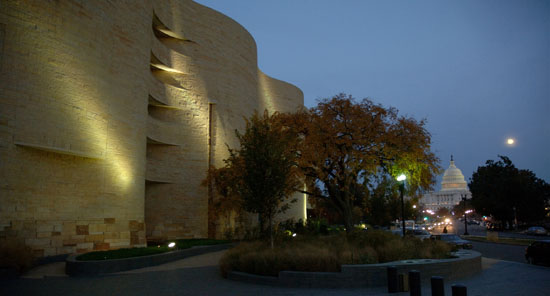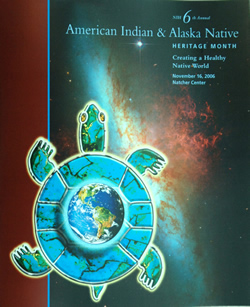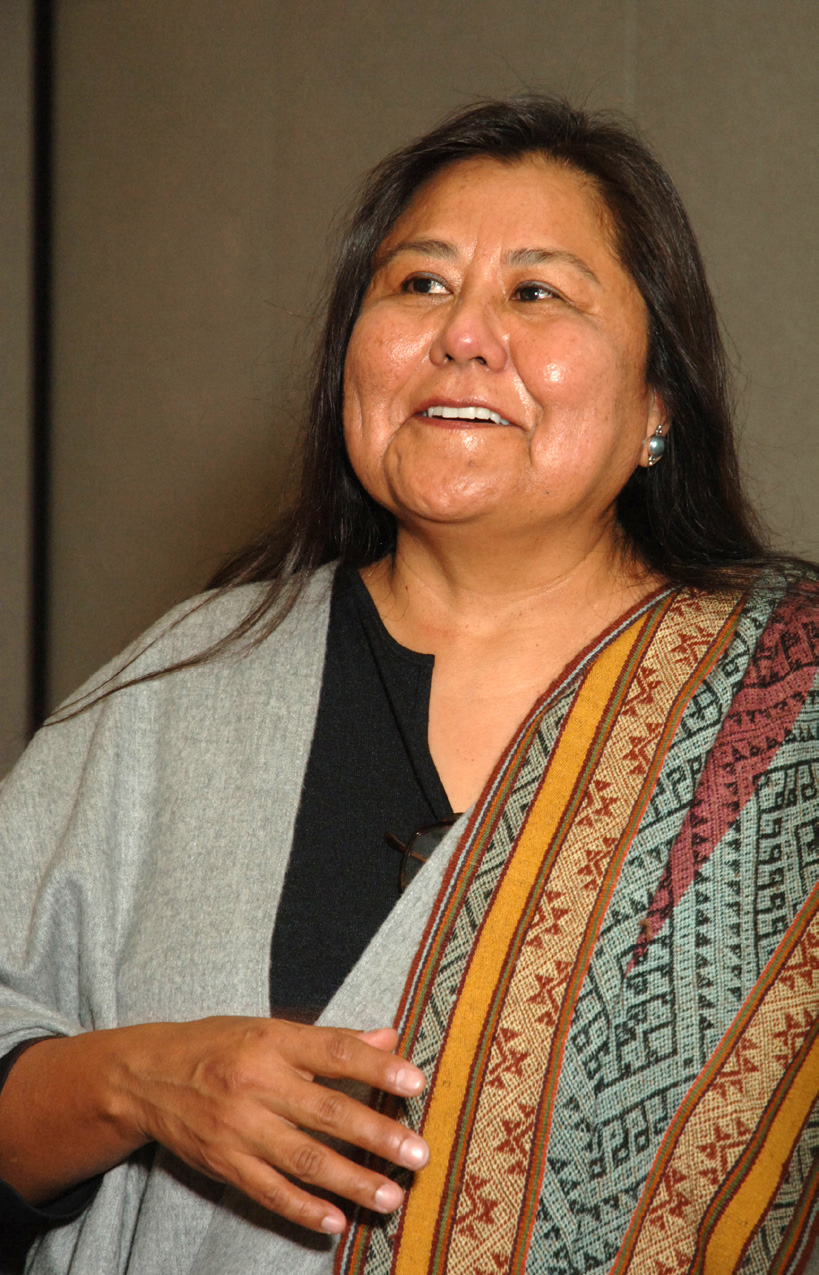| |
 |
|
|
|
|
| |
The National Museum of the American Indian at moonrise. |
|
“I am of the Towering House People Clan of the Diné and Turtle Clan of the Oneida,” said House. Although born in Washington, D.C., she was brought up on the Diné reservation, where her grandparents and parents handed down the Diné traditional ways. Her lecture was in observance
of the 6th annual NIH American Indian and Alaska Native Heritage Month.
The Diné (also known as Navajo) are a sovereign
American Indian tribe whose reservation covers about 18 million acres in northeastern Arizona, Utah and New Mexico. It is the largest area assigned to Indian jurisdiction within the U.S., although the Diné’s historical boundaries are much larger than the current reservation.
“I started as a molecular biologist to become a doctor,” House said, “but I couldn’t separate mind and body.” Instead she became a botanist for the Nature Conservancy, surveying federally
listed endangered plant species—as well as those “culturally endangered, important for ceremonies,
medicine or food”—as she developed a program to protect and conserve the biodiversity
of indigenous lands in the southwest. She then worked for 11 years on the planning committee
of the National Museum of the American
Indian, part of the Smithsonian Institution. The NMAI opened in fall 2004.
 |
| Commemorative poster shows Turtle present at the creation and embodies a sacred story. The Oneidas’ version tells how the Earth was once covered with water until the Great Spirit sent his daughter down from the sky. As she fell, the water animals rushed to prepare a home for her, diving to retrieve bits of Earth from the bottom of the sea. They summoned Turtle and patted the soil over his shell. Dry land grew and formed the place where Sky Woman would live and give birth to twin spirits: good and evil. To this day, Turtle still holds the Earth on his back. |
“A Native perspective is so tied to the land,” she said. “When you ask them who they are, they describe what’s around them.” She found herself working with conventionally educated architects—a clash of worlds. For starters, they wanted to plant tulips, that springtime staple of the National Mall. She told them tulips were not native—not even to the U.S.
“That was a new topic at the Mall,” she laughed. Along with her search for indigenous, unhybridized
plants—at 11 different nurseries across the country—came her struggle to teach a different
focus, an Indian focus: that we are not a transcendent species but a part of nature to which we bear responsibilities.
For their part, her colleagues had never had a project where the grounds were as important as the architecture. She persuaded them to orient
the building entrance to the east—unlike its fellows, which open onto the Mall (north-south)—and to set prisms into the southern wall. These elements align with the solar calendar,
solstices and equinoxes.
“We reflect our environment; our prayers are focused there. I decided to honor that,” House said. “Many people have gone extinct and this [museum] is in memory of those people.”
She introduced herself to the place by canoeing
the Potomac and walking the site, “to let the landscape know I was there and to acknowledge
all the different plants and animals who live around us.”
 |
| Donna House (Diné/Oneida) designed the grounds of the National Museum of the American Indian. |
Around the museum now are four micro-habitats
indigenous to the region: an upland hardwood
forest, eastern meadowlands, traditional
croplands and lowland freshwater wetlands. The wetlands rhyme with the site’s original marshy spots and the little-known Tiber Creek, which runs underground in the vicinity. “It’s still under there,” said House, and still flows into the Potomac.
Her plantings include native phlox, dogwood,
bloodroot, willow and soft-stem bulrush,
among 189 genera and 30,000 individual
plants. Vivid slides showed these beauties in close-up, as well as the sweep of the project in architectural drawings and ritual ceremonies.
Seeds and plants were blessed before being brought in and incorporated into the landscape.
Each item bore a particular meaning to diverse tribes across the Americas and all were donated or loaned from as far away as Québec, Chile and Hawaii. These included “Grandfather Rocks,” which are not seen as dead or inert.
“Boulders are very important,” she said. “We see them as people...we had to acknowledge this natural element as equal to us.”
And there was one more story, she told the audience.
“When talking to the commission about the boulders,” she said, she wondered how to explain the meaning of stones to people in suits. They had to give their approval and “were totally stone-faced,” she laughed. Then one simply took her off to a corner and, to her surprise, produced a small stone he’d been toting
around in his pocket. Then another “suit” produced something cached in his pocket—he too, had a stone.
“Well, I thought, this is wonderful, to share this connection,” she said. “So different world views are going to come together!”
Thus a museum was born. For more information
about the NMAI, visit http://www.nmai.si.edu/. 